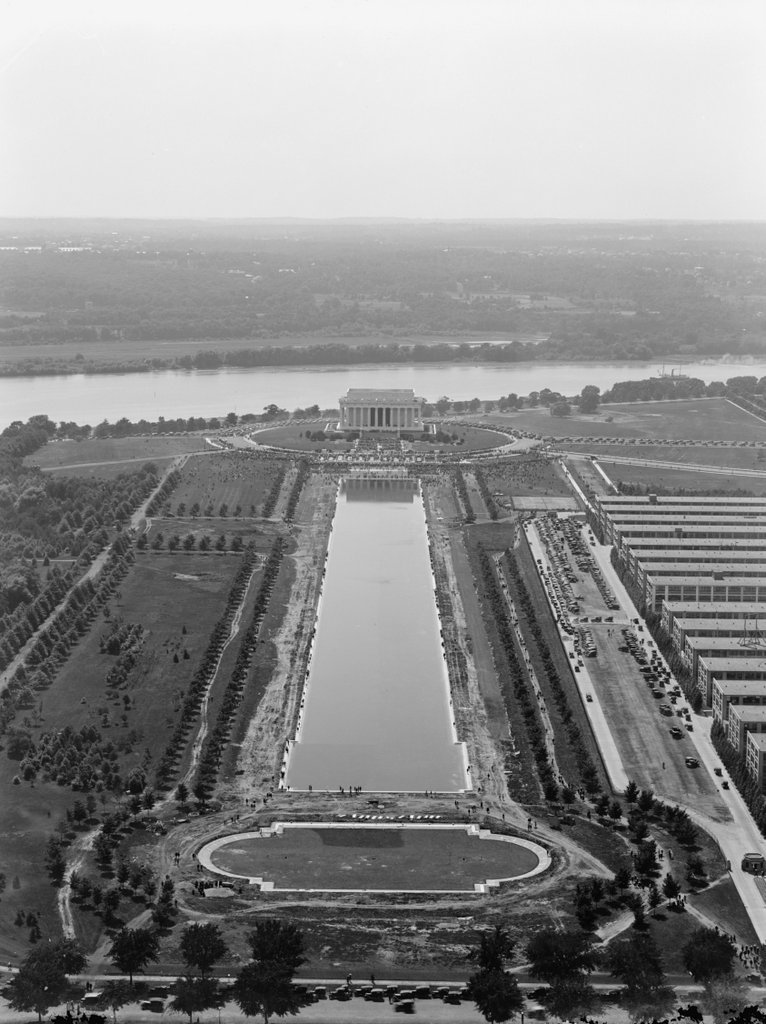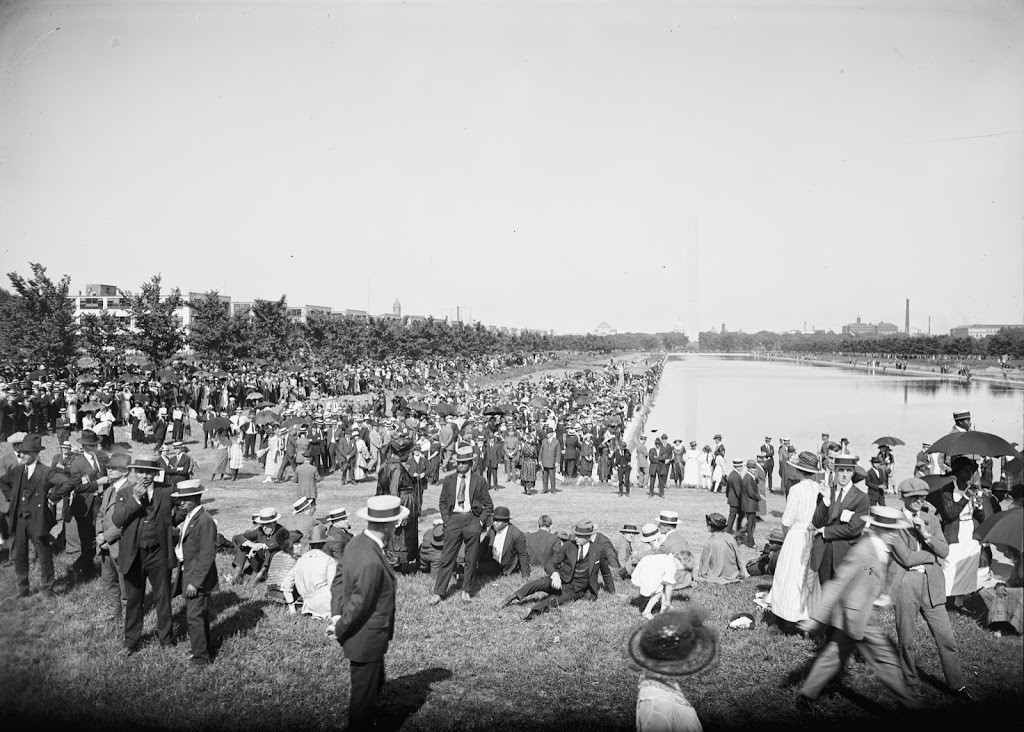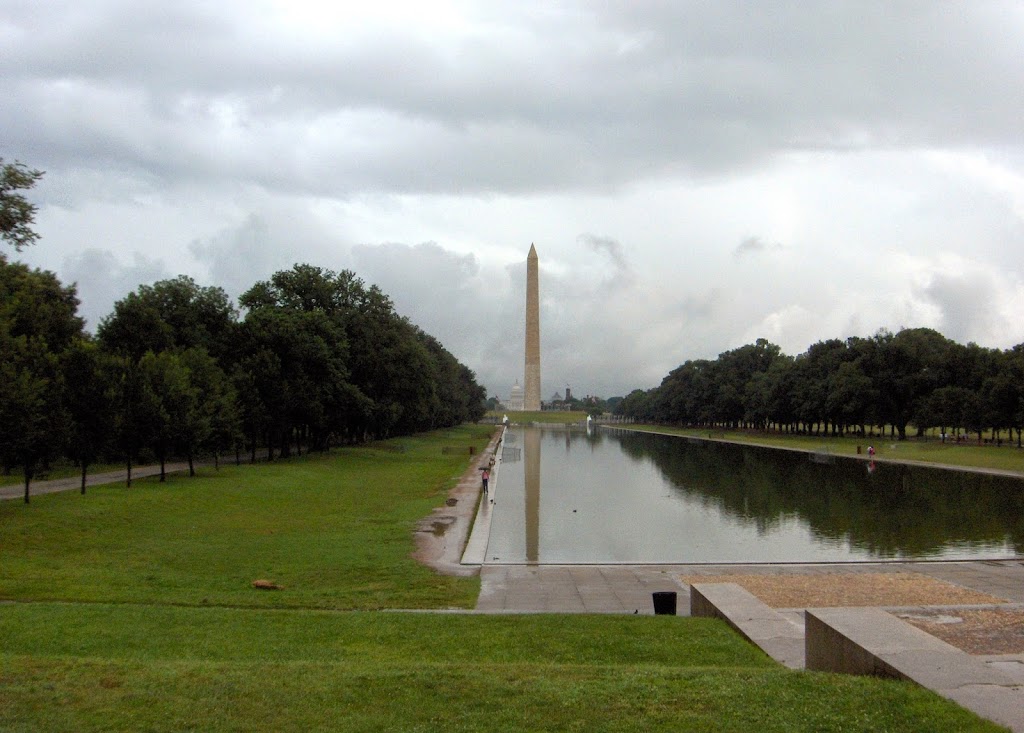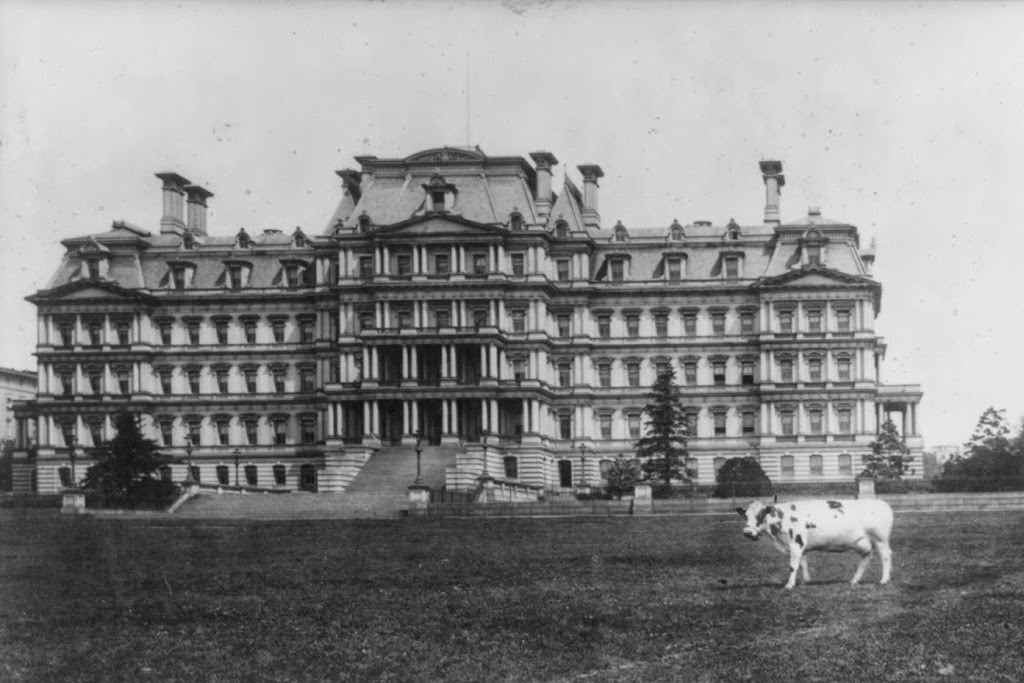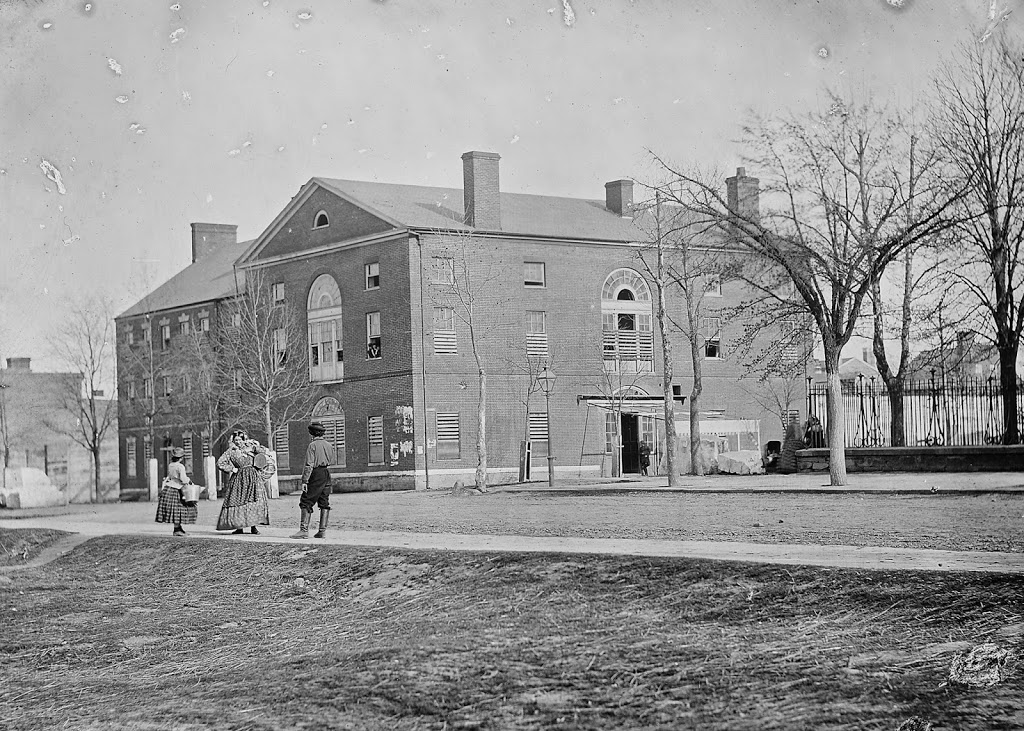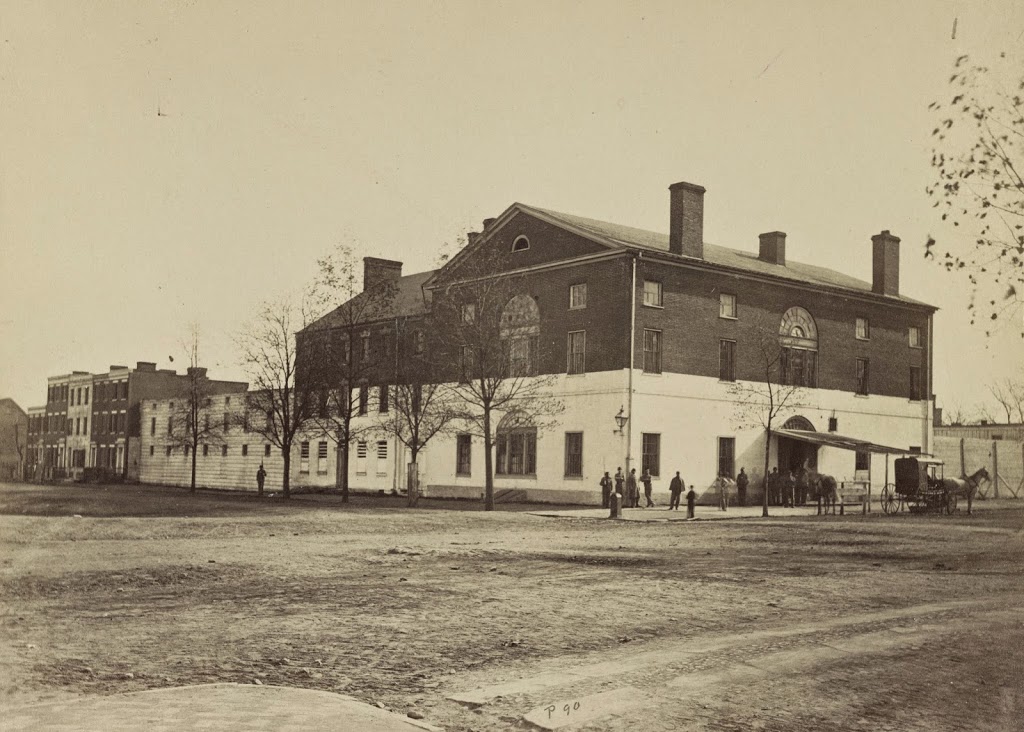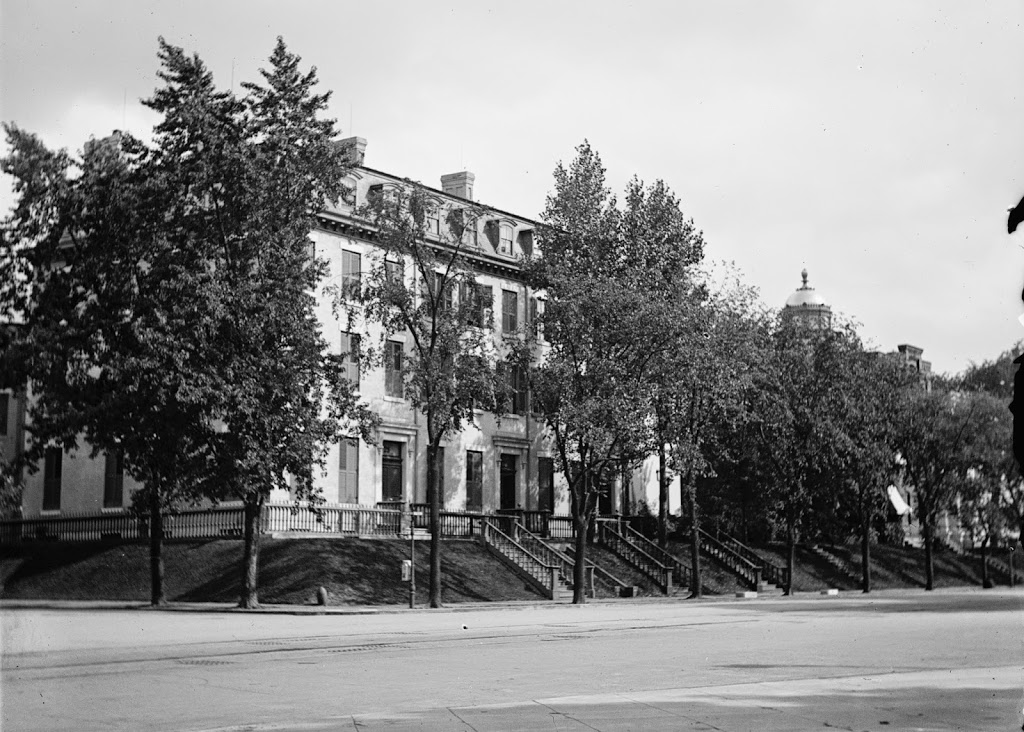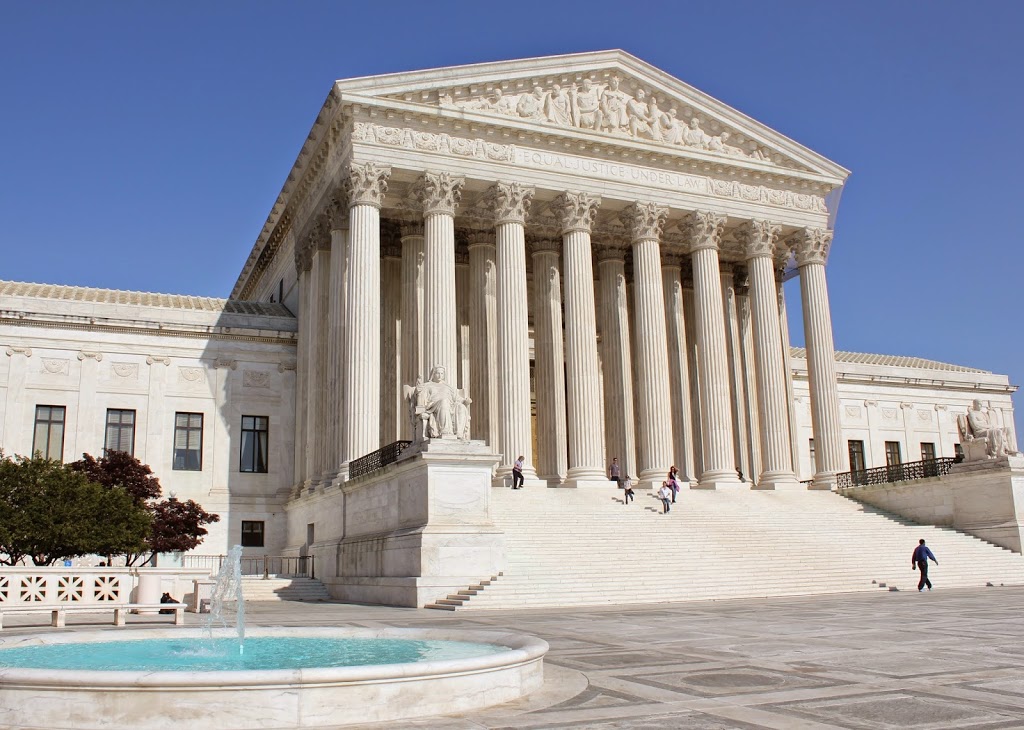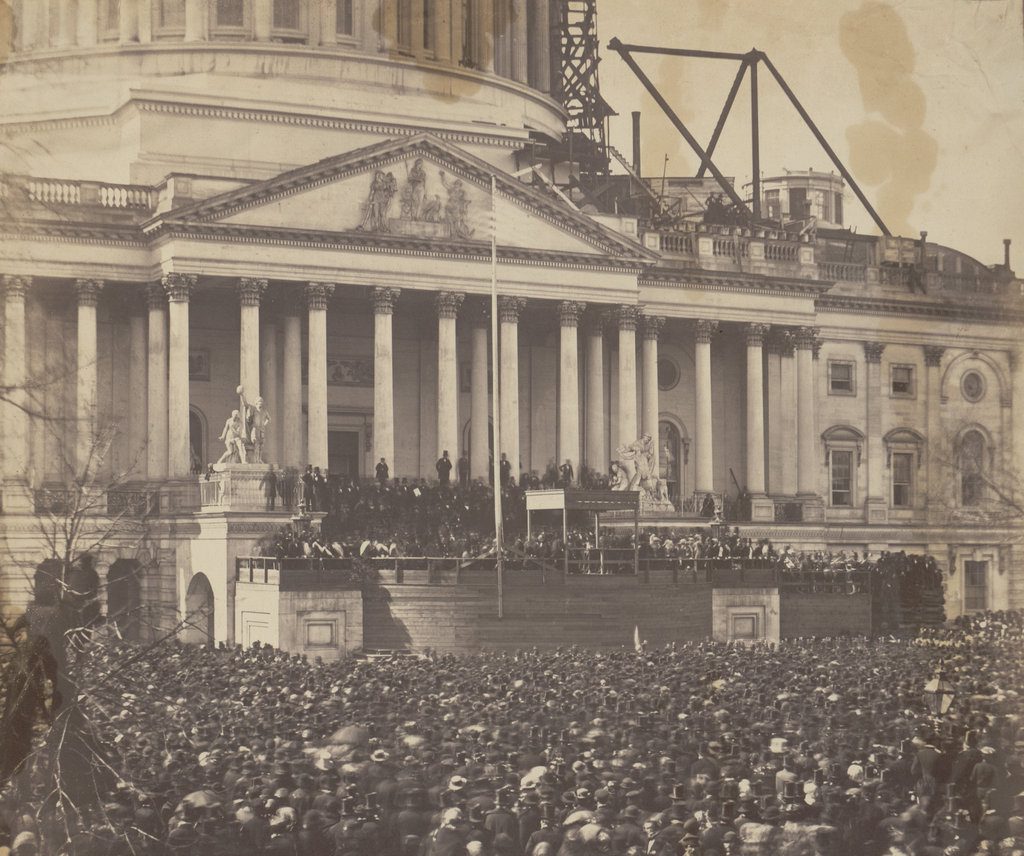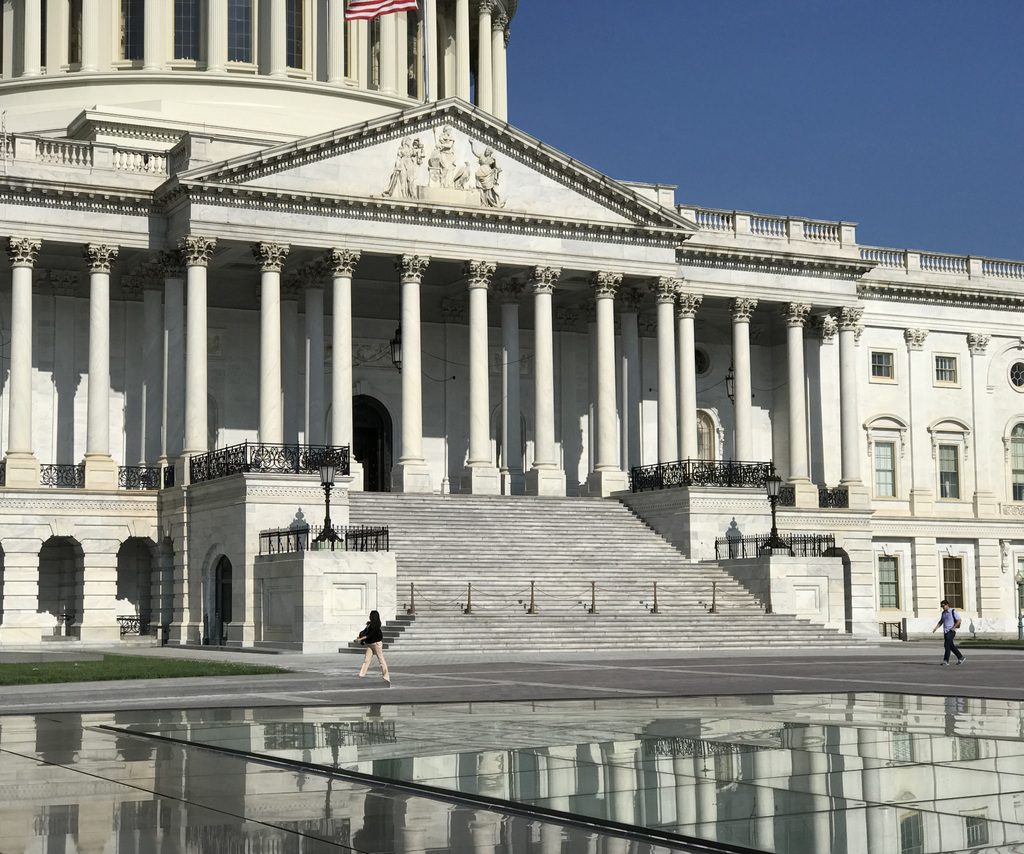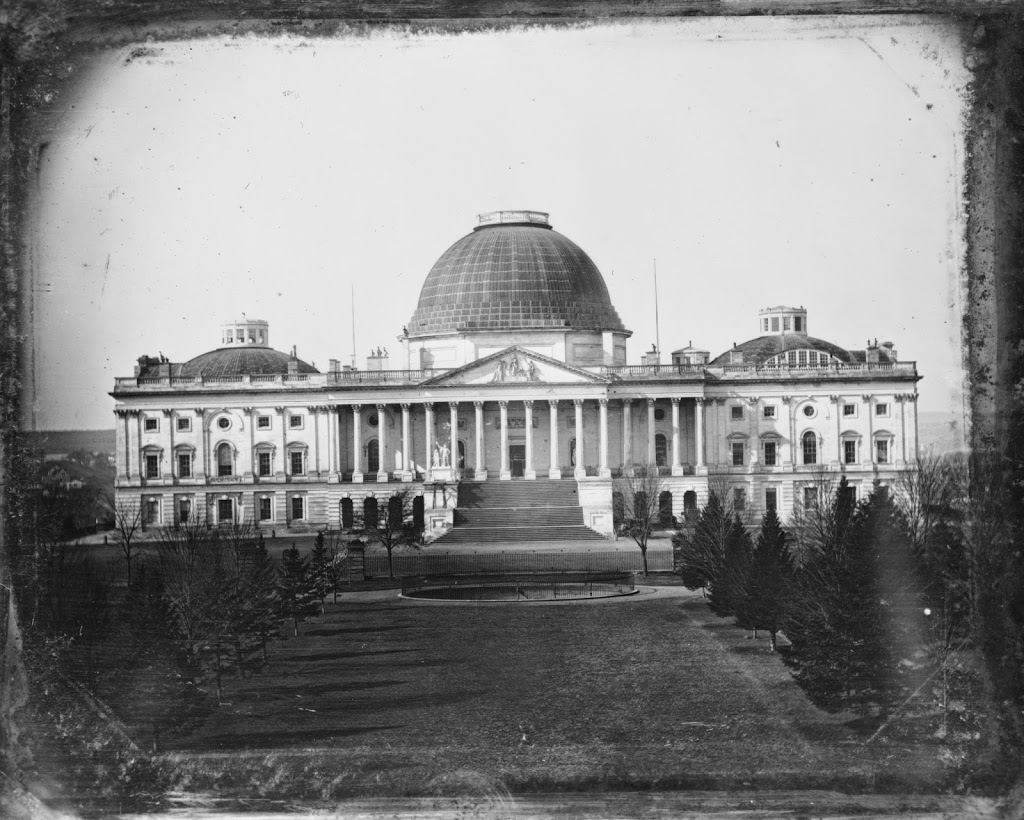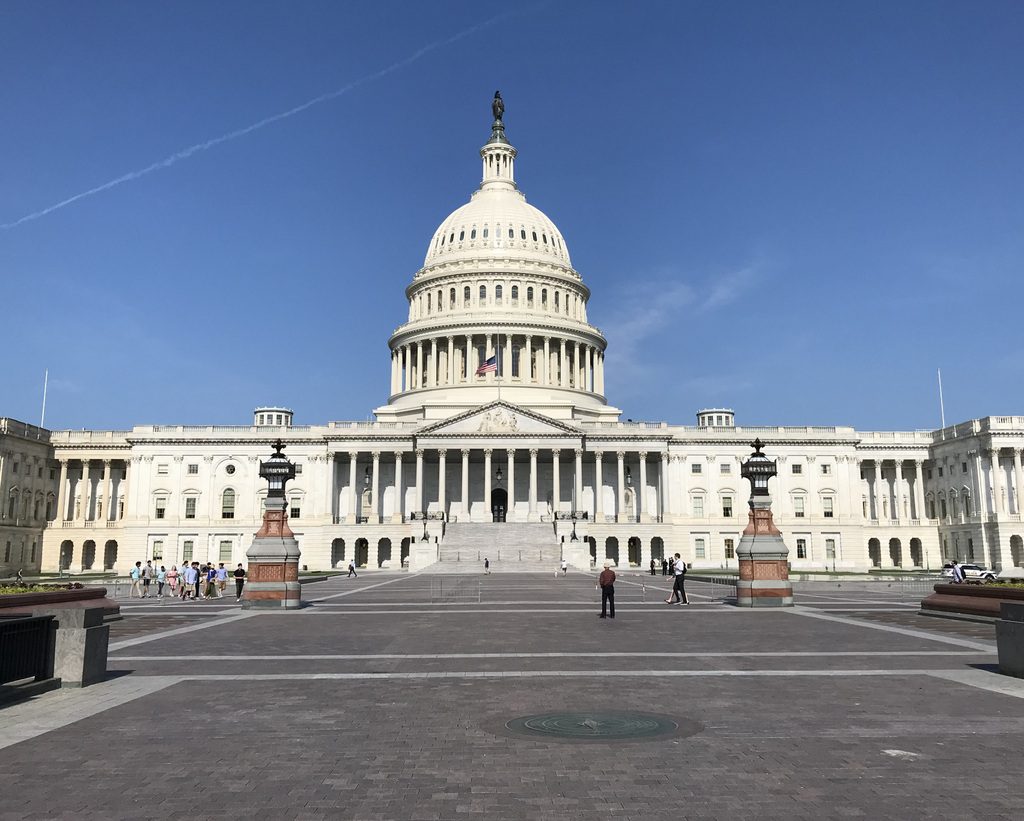The view of the Lincoln Memorial on May 30, 1922, the day that it was dedicated, from the Washington Monument. Image courtesy of the Library of Congress, Harris & Ewing Collection.
The scene in 2021:
Both the Lincoln Memorial and the Reflecting Pool are iconic images of Washington DC, but in 1922 they were brand new features on previously swampy, vacant land. Today they remain largely the same, but the surrounding area has changed. Across the river, the city of Arlington has been built up, and two bridges are now visible in the scene, connecting it to Washington, D.C. In D.C. itself, one obvious difference is the Main Navy and Munitions Buildings, which are on the right-hand side of the photo. The “temporary” buildings were built in 1918, but they remained in use until 1970, when they were demolished and replaced with the Constitution Gardens as seen in the 2006 photo.

